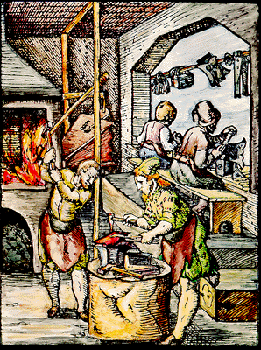Tourism in Isère and Savoy
- Cultural heritage in Isère and Savoy
"One more step and you were in Savoie"


Our cottages, Au Vieux Four à Pain, located in Isere, 550 meters above sea level, are four kilometers from the "border" Savoy. Arvillard and La Rochette are the first villages in the country of Savoy. It is the torrent, "Le Bens" which marks the county limit north of our town, the Chapel of Bard, a small village in the canton of Allevard which has kept its rural and mountain character.
Many walks are available to you, from our cottages. You will discover the landscapes, the forest, the meadows, the mountain. Each season, new colors, new pickings of wild strawberries, mushrooms, chestnuts ... 

A visit to Allevard-les-Bains , Isère, is essential because you will discover a warm and lively village heart, with its restaurants, shops, thermal baths, parks, narrow streets and flowers ... The nature around is beautiful, torrents, waterfalls, lakes, forests ...
The first sulphurous spa treatments took place from 1813, but especially since 1848. Allevard has one of the most efficient thermal waters in Europe.

The valley of Haut-Bréda, in Isère, deserves a detour, it is one of the most beautiful valleys of the Alps, unrecognized, discreet, wild and magnificent. The villages have still kept their authenticity in a typical alpine environment. At the end of the road, where the glacier Gleyzin closes the valley, you will reach the hamlet of Fond de France, starting point for many hikes, 15 minutes from your bed and breakfast.

The chain of Belledonne seen from the vineyards of Chapareillan (Isère), door of Savoy and the regional park of Chartreuse (20mn).
It is the valley of Grésivaudan which separates these two massifs. To the south, Grenoble (30 mn), Isère prefecture, the capital of the Alps, technological capital, tourist and cultural, especially with its eleven museums. Chambéry (35mn) to the north, city of art and history, its pedestrian streets in the old town, around the castle. You can see the carillon, with its 70 bells, it was the largest in Europe to its construction. It is installed in the Yolande tower of the Sainte-Chapelle Gothic castle of the Dukes of Savoy. To see also, the house of Jean-Jacques Rousseau Charmettes. Not far also, Albertville (40 minutes), the recent Olympic city of Tarentaise and its medieval city of Conflans.
Lyon , capital of Gaul, silk ... and guignol is an hour and a half from our guest rooms, just like Annecy , the Savoyard Venice with its beautiful lake. Another city of water, Aix-les-Bains (1h) and Lake Bourget which is the largest lake in France.
The Rhône-Alpes region, which is very active and economically attractive, is nevertheless very rich in tourism thanks to its exceptional natural environment. The Rhône-Alpes townspeople appreciate an urban quality of life that is constantly improved and privileged.
Our guest rooms are located 20 minutes from the technological and scientific Montbonnot, professionals traveling in our region will benefit from us, a total and relaxing scenery, high speed internet connection is available. Meeting room possible, see here.

Balconies of Belledonne.

The famous road of the balconies which connects the two spas of Uriage and Allevard.
Starting from our bed and breakfast take the direction of Grenoble then that of Uriage les Bains.
Departure from Uriage, spa that has preserved its charm of yesteryear with its castle of the eleventh , its casino, its villas, its large hotel .
Take the direction of St. Martin Uriage, there you are on the "road Balconies Belledonne", after Pinet, you will see magnificent views of the valley Grésivaudan, the peaks of Chartreuse and Belledonne.
Then you arrive at La Combe de Lancey, picturesque village of Belledonne where many houses have preserved their traditional bread ovens.
At the castle of Lancey (XIII) you will visit the museum of arts and popular traditions. The museum of the white coal is devoted to the hydraulic energy necessary for the paper industry of the valley, which took off in the 19th century with Aristide Bergès.
Then take the direction of Col des Mouilles, in the heart of a magnificent forest of fir trees and spruces, then the Col des Ayes, starting point for the station 7 Laux. Arrival at Theys and its old castle, not far from the Col du Barrioz.
At the Col du Barrioz, departure to the Grand Rocher or Crêt du Poulet, exceptional point of view. There, an alpine chalet welcomes walkers and you can admire the Grande Lance of Domène, the Dent du Pra and the Belledonne range.
Continue to Saint Pierre d'Allevard (12th century church) and Allevard, the spa and tourist resort of our canton, three kilometers from our bed and breakfast.

Typical architecture of the Belledonne massif, barns located at 1000 meters altitude

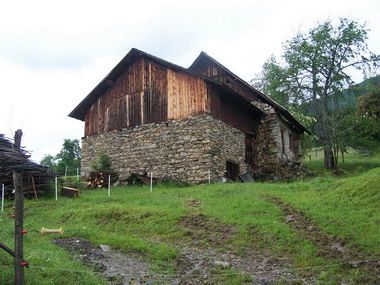
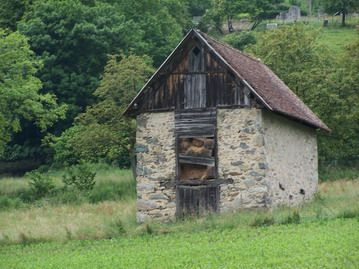

Bed and Breakfast Isère Bed and Breakfast France Alpes Isère
Close to our bed and breakfast, you will discover our cultural heritage in Isère and Savoy
Grésivaudan-actu: the agenda of Grésivaudan
The Jadis Allevard Museum
The Museum of National Interest
the Karma Ling Institute and the Sangha Rimay, Savoie.
THE HOUSE OF FORGES AND MILLS
A few kilometers from our cottages, Pinsot, Isere, a typical village in the valley of Haut-Bréda.
Eighteenth-century flour and nut oil mills that operate with the hydraulic power of the torrent were put back into service as well as the forges, the cutting and its whip .
The strong house of Chevalier Bayard
The Tower of Avallon
This tower, classified as a historical monument, was erected by the Carthusians in 1895 to honor Saint Hugues d'Avalon.
You can admire it in Saint Maximin, in Isère, in the valley of Grésuvaudan. It is built on the former keep of the medieval castle of Avalon, it was the central element of this castle disappeared today.
It is built on the ruins of a watchtower in the native castle of Hugues d'Avalon who was bishop of Lincoln in England (1140-1200). The Romestang of Avalon, nobles of Haut-Grésivaudan, were the owners of the castle which dates from before 1040.
Fort Barraux


15 minutes from our bed and breakfast discover Fort Barraux. Isere

THE CASTLE OF TOUVET

THE FUNICULAR OF SAINT HILAIRE DU TOUVET
An exit on the natural site of the Funicular is:
• a "historic" ascent and strong sensations: you climb on the steepest slope in Europe
• an educational and fun discovery with the Icare Laboratory
It is also the occasion of a pause:
• sportive: enjoy the pleasure of walking or hiking in the Chartreuse Regional Nature Park or experience more intense emotions in the via ferrata of the Oule waterfall
• contemplative or gastronomic in a beautiful setting.
CAVES BEAR MUSEUM
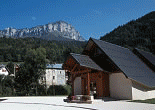
Today, thanks to the curiosity of speleology enthusiasts and the tenacity of specialists in paleontology, the Chartreuse and Savoy can boast of having one of the largest and richest cave bear deposits ever discovered!

THE BASTILLE AND ITS TELEPHERIC IN GRENOBLE

Since, the site of the Bastille is a place of privileged walk for the Grenoblois and the tourists.
VIZILLE CASTLE

The Estate and the Château de Vizille, Museum of the French Revolution.
THE FELICIAN MUSEUM
Let yourself be guided by the Félicien, farmer of the last century, who will tell you about his village, his family, his land ... and the time that rushes to the rhythm of the seasons in Argentina in Savoy . 

THE LAKE BOURGET

Lake Bourget 30 minutes from our bed and breakfast. The largest lake of glacial origin in France. A remarkable flora and fauna. You will see a variety of bird species, a vast reed bed, an aquarium and why not a little stroll on the lake. A must visit in our region.
Hiking. Nature discovery. High mountain 
For your walks, we lend you rackets and sticks.
Our bed and breakfast Au Vieux Four à Pain are located on the route of GR® Country Tour of the Pays d'Allevard and are Road Fellows of the French Federation of Hiking, for the Isère.
Our guest rooms



Snowshoeing on the Grand Rocher





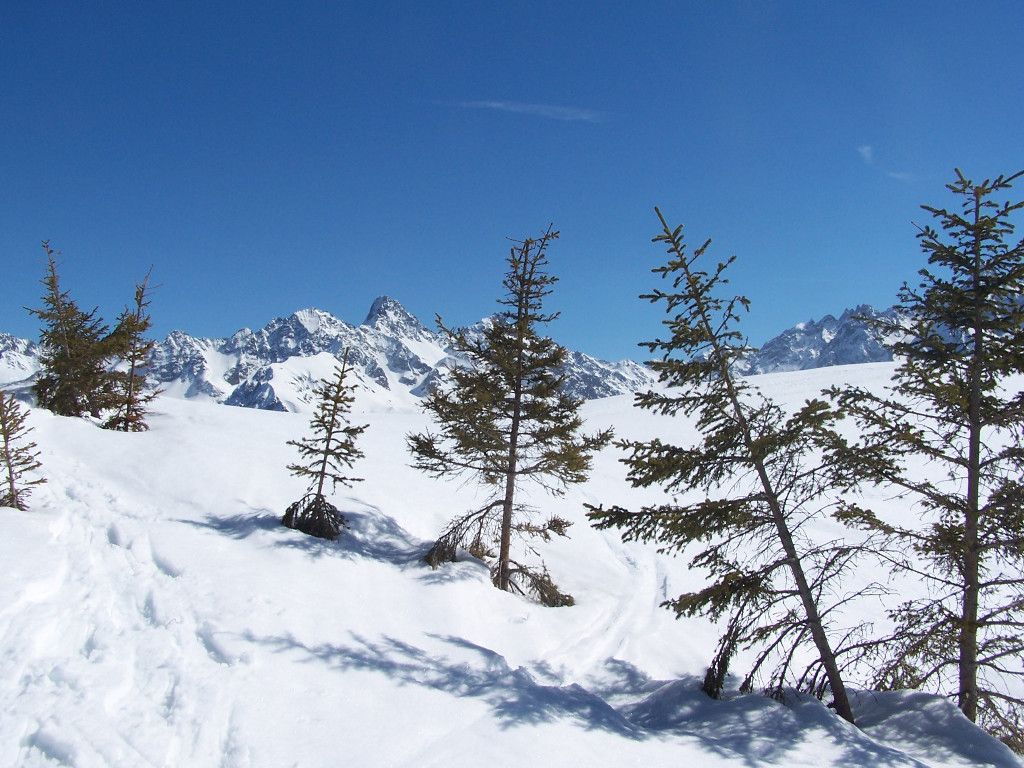



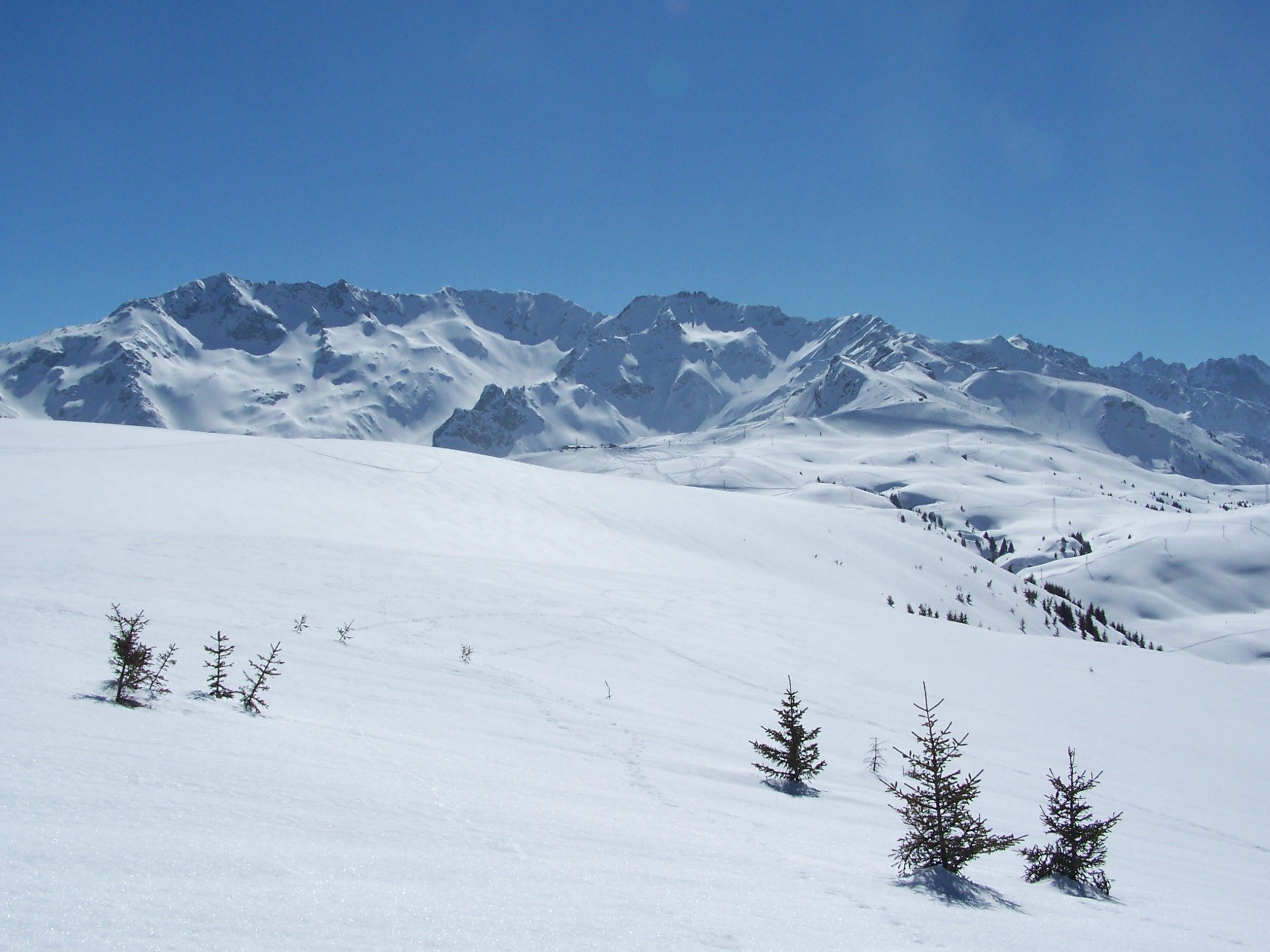

Val Gelon
Our guest rooms are located three kilometers from Savoie and Val Gelon.
There is a place where we like to go hiking especially, it is the area of Col de la Perrière. Multiple hiking trails are available to you, more or less difficult, there is for all calves ... These departures are from Val Pelouse, 1750 meters above sea level, 30 minutes from the house. It is also a spot of paragliding take off from the clubs of Coeur de Savoie

Hiking
Departures from these summer hiking routes are about 30 minutes from our bed and breakfast in Isère.
You go to the mountains, your necessary equipment and some tips.
- Upright boots adapted to the topology, the terrain and the seasonal climate. Warm and waterproof clothes, the system "three layers" is the best protection: the first layer, socks and underwear, must allow the evacuation of perspiration, dry quickly, keep the body "hot", for that no cotton . The second layer must retain heat by being breathable, polar. And the third, a windproof and waterproof jacket.
- Your backpack is as important as your shoes, it must be adapted to your hike: the bigger your bag is, the more you tend to load it. The load should be closer to the body, which is heavy should be stored in the middle of the bag, as close to the back as possible. The muscles of the spine will work ideally. Adjust the straps of the bag to best distribute the load. Do not forget, gourd, knife, food, energy bars to avoid tiredness, sunglasses, detailed map of your route, avoid going alone. Let someone know your route, check the weather before you leave, know that the weather changes very quickly in the mountains. Do not forget to bring down your garbage cans. The mountain, even in summer, can be dangerous. From a mobile in the event of an accident, dial 112
- Your ideal first aid kit: first-aid guide, vinyl gloves, survival blanket, adhesive and compression bandages, anti-blister or double-skin dressings, sterile gauze packs, gauze tape, sparadra, safety pins, disinfectant, anti- shots, anti-burns, high protection sunscreen, lip stick, scissors and splinter forceps.
- Do not forget to drink because it is essential. 70% of the weight of our body is composed of water, this percentage must remain constant. Every half hour, take a few sips, more often if necessary. Avoid drinking a lot of water during less frequent breaks. Do not wait until you are thirsty to drink. If you go on a "normal" hike of several hours, you can drink 1.5 liters of liquid, then in the evening you will make up for the deficit by drinking more.
- The sticks: they allow an optimization of the displacement by distributing the muscular work of the body. Your hips and your knees will be relieved of 20% of the weight of your body ... it is necessary to spare the mount ...! This will also prevent falls in case of imbalance.
You have read the warnings and tips above, so you can read more and have a good hike!
THE HIGH TRAVERSEE OF BELLEDONNE 
Discover the Belledonne massif through its pastoralism, meetings with the "actors" of this magnificent remarkable territory. You will discover more information on the pretty site of the Trails of Shepherds in Belledonne
REFUGE OF STONE OF SQUARE 
Discover the fauna and flora of Belledonne, in Isère. Departure from Super Collet, follow the Lakes, then the refuge of the Pierre du Carre. Back by the Claran Pass, the Plagnes and the Occiput Pass.
Discovery of an exceptional flora (Saint Bruno lily, Martangon lily ... ) and a very abundant fauna (eagles, chamois and marmots).
Panorama on Mt Blanc, Lake Bourget and the agglomeration of Grenoble.
Follow the trail 2000: very well signposted and marked, 15 plaques punctuate the course and tell the story of the Pays d'Allevard, Dauphiné and Savoie.Attention the trail crosses pastures: keep your dogs on a leash, do not approach no petting dogs, shepherds' dogs who guard the flocks!
Refuge guarded by the Pierre du Carre: possibility to eat.
> Loop
> Duration: 4 hours
> Distance: 8.5 km
> Altitude difference: 430 m
> Rating: pedestrian = average, MTB = difficult
> Optimal period: June to September
Possible variant:
It is possible to reach the Occiput Pass directly by going up to the level of the ski lift of the sun by a path at mid-slope.
THE LAKES OF SEVEN LAUX 
One of the largest and most beautiful hike in the Belledonne massif, if not the Isère, to discover a grandiose site with its many mountain lakes at 2100 m altitude. Black Lake, Lac Carré, Lac de la Motte, Lac Cottepens, Lac Blanc, Lac du Cos, Lac de la Corne ... The landscape is breathtaking!
Starting point for many hikes to the highest peaks of the Belledonne massif (the Pic de Belle Etoile 2718 m. , The White Rock 2928 m ...).
> Loop
> Duration: 7 h 00
> Distance: 10,2 km
> Gradient: 1090 m
> Rating: difficult
> Optimal period: April to October
Departure from Fond de France (Isere). From the car park, located on the left of the road going to Pleynet, follow the directions France Barral, Côte Rosset, 2 Brooks, Black Lake and refuge of 7 Laux. Back by Black Lake, then the Cul de la Vieille, Gleyzin chalet, 2 streams, Rosset coast, France Barral and Fond de France.
Regular but steady slope. The pasture of Sept-Laux is forbidden to dogs, even on a leash.
Le Crêt du Poulet 
> Duration: 4 hours (1 h15 + 1h30 + 1h15)
> Crêt du Chicken: 1726m
> Great Rock: 1926m
> Altitude difference: 600 m
> Quotation: easy
> Optimal period: April to October
The start is from the cross-country ski center 1416 m after the Barioz pass. It is a very pleasant and uncrowded walk.
From the foyer, continue along the forest road which extends the road for 400 m and turn left, direction "Chalet Pierre Roubet". After the chalet, at the junction follow the direction "Crêt du Poulet". The ideal is to do this circuit in the other direction because if signs are present at the cottage and refuge, there is nothing on the ridge and it is difficult to identify the right path for the descent. Chicken Cret Refuge is reached in one hour. Climb behind the refuge to see the two orientation tables that offer magnificent views of the Vercors (Isère), Chartreuse (Isere), Bauges (Savoie) and Belledonne.Rescend to the refuge and take the well marked path that follows the ridge in a southerly direction. You can go as far as the Grand Rocher at about 1h30.
For the return, you can avoid following the ridge to make a less rugged route before finding the path, close to a lake, which leads back to the chalet Pierre Roubet.
°°°°°°°°°°°°°°°°°°°°°°°°°°°°°°°
Other hikes in Belledonne ... click here.
°°°°°°°°°°°°°°°°°°°°°°°°°°°°°°°
 * Pugs are sheep flock protection dogs, they are sometimes several when the flock is important. The hussy is part of the group in which he lives. Its mission is to hunt intruders (humans, animals). As you approach, he comes to sniff you to identify you, then returns to the flock. If you are too ready, he will try to intimidate you.
* Pugs are sheep flock protection dogs, they are sometimes several when the flock is important. The hussy is part of the group in which he lives. Its mission is to hunt intruders (humans, animals). As you approach, he comes to sniff you to identify you, then returns to the flock. If you are too ready, he will try to intimidate you.
Tips: - You see a flock, get around it a lot.
- when approaching the patou, keep calm avoid sudden movements and cries, to reassure him, be passive ..
- Do not try to carress, feed, take a picture, it may be interpreted as aggression by the dog.
-If you have a companion dog, it is better to hold it firmly than it will avoid a deterrent "charge" on the part of the patou.
If the visitor of this site decides to take inspiration from the information put at his disposal to organize his hikes, without guide or guide, he admits to do it under his responsibility. Namely, your choices only belong to you. Do not engage in a hike if it is too difficult for you or if the weather is bad. The author of the site declines any responsibility in case of accident ..
An excellent site to prepare your hike: https://www.randonner-malin.com
The maintenance of his hiking boots in 5 steps and other hints and information about the hike ... Visit the page of RANDONNER MALIN .
You can download the guide "How to choose your hiking shoes" in PDF by clicking here or the guide "List of hiking equipment" by clicking here.








